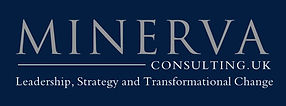
Internetworking: Logistics & Supply Chain Business Model Change
The Engagement
An alumnus of the leading US internetworking company's ‘global high potential leaders programme' (designed and delivered by us) saw the value of ‘leadership practices’ to create clarity and engagement and asked us to teach the methods to and facilitate application with a group of senior executives who were grappling with an ‘wicked $5Billion roadblock / problem’.
The business needed to change the business model which governed the way in which it worked with its channel partners in providing service, maintenance and spare parts to 'end user customers' (governments, corporations and telecommunications providers). The channel partners approved, in general terms, of the change providing that US$5 Billion of spares in the global supply chain could be removed without it financially hurting them. Naturally the client did not want it to hurt them either. This problem had existed for over a year with no progress being made by the 12 executives working on it.
Global Service Support (GSS), a division of the client, were asked to propose a solution(s) for conversion/utilization of this inventory to:
-
Reduce partner inventory of spare parts currently blocking the expansion of the new business model.
-
Achieve this in the shortest possible time while minimizing the financial impact to the partners and maximizing the client’s annuity revenue opportunity.
We facilated 'Mission Analysis' by the 12 in small sub-groups and integrated the output. Clearly, some people thought that they were solving an entirely different problem – no prior collective thought had been given to the aim, purpose and specific desired effects, hence the low level of progress made. After half a day, the team were able to summarise this in a clear, concise unambiguous 'mission' (overall intent and its purpose) to which they were all committed and to which all further thought and activity would be aligned: To remove the inventory roadblock in order to facilitate migration to shared support.
This looks simple and obvious to an observer but it took some heated discussion to reach agreement. Having identified factors affecting the aim, deductions should have been made about the implications and what tasks had to be completed. However, it very quickly became apparent that there was little or no relevant information actually available and therefore few meaningful deductions could be made. What the group was able to do was identify the specific questions that needed to be asked and of whom, in order to obtain the information required from which to make valid deductions.
While ‘the courses of action (CoA) open’ in detail could only result from a full analysis of factors; several CoAs, in very broad outline, could be identified without waiting for answers to the questions referred to above. A full and accurate comparison of these CoAs could only result from making deductions about the answers to the questions. In the absence of this though, the team was surprised at the number of advantages and disadvantages that could be stated about the options that were identified. After the initial appreciation, three options were ruled out by the CEO for various reasons and work was progressed on understanding the other two at the next level of detail down. After a month an option was chosen and executed over the next three months.
The Client Perspective
"The mission-focused decision-making and strategic planning practice is probably the most valuable business lesson I have learnt in the last five years, it has significantly improved the performance of myself and my team by doing the thinking up front and implementing a course of action that needs little or no re-engineering and is easy to adapt as the situation changes and evolves. I can’t speak highly enough of the process – it works to great effect. The speed at which the problems are solved and the quality of the output is fantastic! People become engaged and ownership is built while clarity of what, why and how is created. The process stops people jumping to conclusions, making false assumptions, and doing things the way they have always been done. The quality of thought and ideas is greatly improved. Using the process improves the atmosphere in meetings by reducing tension in the room and focusing on a common goal. I highly recommend that every leader takes the opportunity to learn the process, use it every day for problems big and small, and experience the motivating effect of making the right decision every time.”
Director, Internetworking Vendor